|
RUMPL PUFFY BLANKET
TEST SERIES BY BRIAN HARTMAN
LONG-TERM REPORT
September 17, 2017
CLICK
HERE TO SKIP TO THE FIELD REPORT
CLICK
HERE TO SKIP TO THE LONG-TERM REPORT
TESTER INFORMATION
| NAME:
|
Brian Hartman
|
| EMAIL:
|
bhart1426ATyahooDOT com |
| AGE:
|
49
|
| LOCATION:
|
Central
Indiana |
| GENDER:
|
M
|
| HEIGHT:
|
5' 9" (1.75
m) |
| WEIGHT:
|
150 lb (68.00
kg) |
I have been backpacking for over
20 years throughout Indiana, Ohio, Kentucky and most recently in Western USA. In
addition to backpacking I enjoy family camping with my wife and kids and being
outdoors in general. I would describe myself as a mid weight backpacker. I use
fairly light weight equipment and gear but still like to bring more than the
bare essentials with me while on the trail.
INITIAL REPORT
PRODUCT INFORMATION &
SPECIFICATIONS
Manufacturer: Rumpl 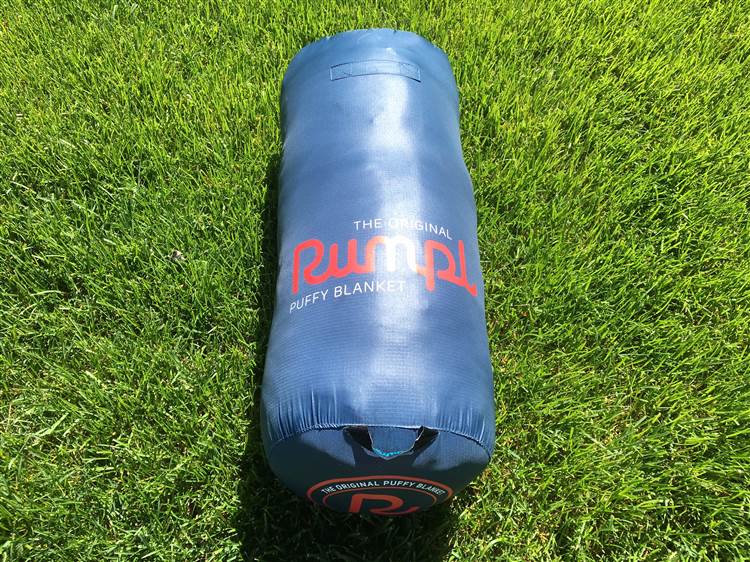
Year of Manufacture: 2017
Manufacturer's Website:
http://www.gorumpl.com/
MSRP: US
$129.00
Listed Weight: 3.1 lbs (1.4 kg)
Measured Weight: 53.5 oz (1.5
kg)
Dimensions: 54 x 80" (137 x 203 cm)
Product Tested: 1-Person
Shell: 20D Ripstop Nylon with DWR Shield
Insulation: 3D Hollow Fiber
Polyester
Available Colors: Deepwater, Maize, Charcoal, Jam,
Coretez
Rumpl describes the Puffy blanket as a premium, versatile
blanket, "made from the same stuff as premium sleeping bags", that can be used
wherever you go or when you don't go anywhere.
INITIAL IMPRESSIONS
The Original Puffy Blanket as
Rumpl refers to it (hereafter called Rumpl or Puffy blanket) arrived at my house
in a striking dark blue stuff sack, measuring 8 x 17" (20 x 43 cm). Rumpl
refers to the color of the stuff sack, which by the way is the same color as the
blanket, as Deepwater and I think that name is very appropriate as it looks like
the color of the ocean away from shore. The next thing I noticed was the
manufacturer's logo printed in red and white lettering on the circumference and
butt end of the stuff sack. Attached to the sack was a single hang tag which
I'll discuss in more detail below. The Puffy blanket really filled up the stuff
sack so it took a few seconds for me to pull it out, but once I did I could see
the blanket in all of its grandeur. Kidding aside the Puffy blanket really does
look royal with its Deepwater color, glossy fabric finish, and red trim that
goes around its perimeter. Needless to say I am very happy with my color
selection and the blanket in general.
The Puffy blanket is available in
three sizes: throw, 1-person and 2-person. The 1-person blanket which I'm
testing measures 54 x 80" (137 x 203 cm) and weighs 53.5 oz (1.5 kg) or
approximately 3.3 lbs by my scale. Before receiving the blanket, I did some
research online and found that Rumpl tested the blanket and it has a 40 F (4.4
C) temperature rating, which means that it should keep me warm for at least
three seasons. Holding the blanket now, it doesn't seem overly puffy, which
should help with packing but makes me a little concerned about the temperature
spec. Mostly I'm anxious to get it in the field and see just how warm it is.
One last note is that the blanket was treated with a DWR coating to resist
water, dirt, odor and other debris. I'm all in favor of anything that helps
resist water and dirt as no matter how much I try to protect my sleeping bags
and quilts they always end up dirty.
As for fit and finish the Rumpl
seems to be very well made with a lot of attention paid to details. The
stitching throughout the blanket is flawless with no loose threads, fabric
snags, or loose seems and the 20D nylon shell appears to be plenty rugged for
the outdoors. The fabric is soft and smooth to the touch and doesn't crinkle
when compressed or folded. For insulation, Rumpl used 100% polyester 3D hollow
fiber batting and upon further inspection it is sewn into the blanket in 15
chambers measuring 6" (15 cm) wide each.
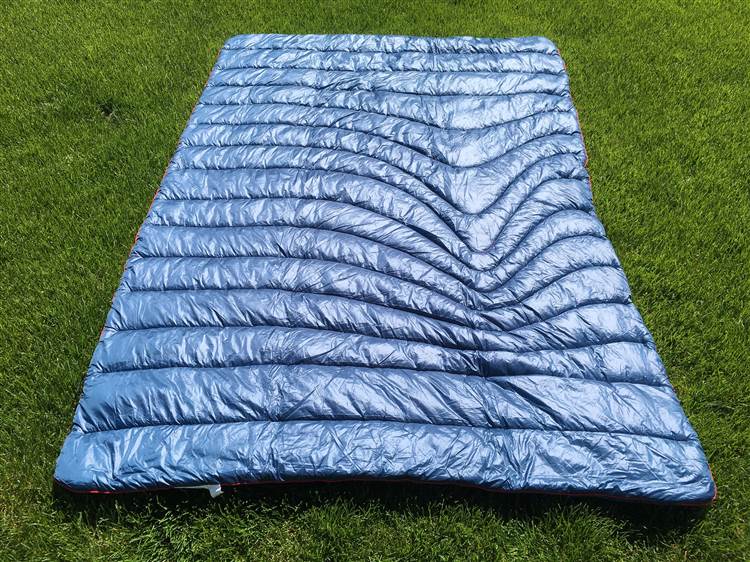 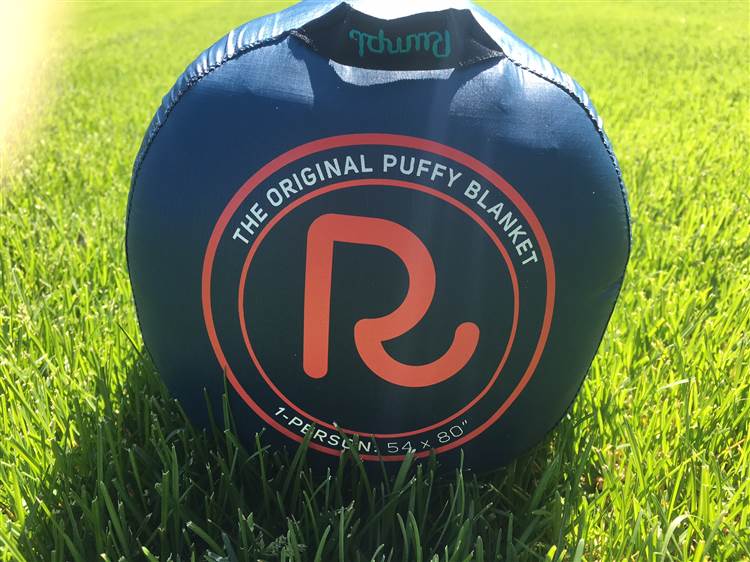
READING THE INSTRUCTIONS
The Puffy blanket came with a
single hang tag which provided some useful information. Of primary importance
the blanket is machine washable. Rumpl recommends a performance wash to gently
clean the blanket and maintain its water resistant treatment. They also
recommend air drying or using the 'no heat' cycle if putting in a dryer.
As for storing the blanket, the manufacturer recommends removing it from
the stuff sack and hanging it by one (or two) of the four loops that are sewn
onto the sides of the blanket. According to Rumpl keeping the blanket in the
stuff sack for long periods of time tends to decrease the loft of the insulation
and thus it decreases the blanket's warmth. I completely agree with them and in
fact I always hang my sleeping bags when not using them.
Finally, in
regards to any hole or tears that might occur, Rumpl recommends using Seam Grip
or Tenacious tape or repair them, rather than sewing the fabric.
TRYING IT OUT
After receiving the Puffy blanket
a few days ago, I set it on the family room sofa and it immediately got noticed.
My entire family now uses it to snuggle up in at night or even during the day
when reading a book or watching TV as it's so soft and warm. Size wise it's
perfect for two people who are sitting together on a couch or even for someone
who wants to lay on top of it and fold it over themselves. Note to self, order
another one of these as a Christmas gift for the family.
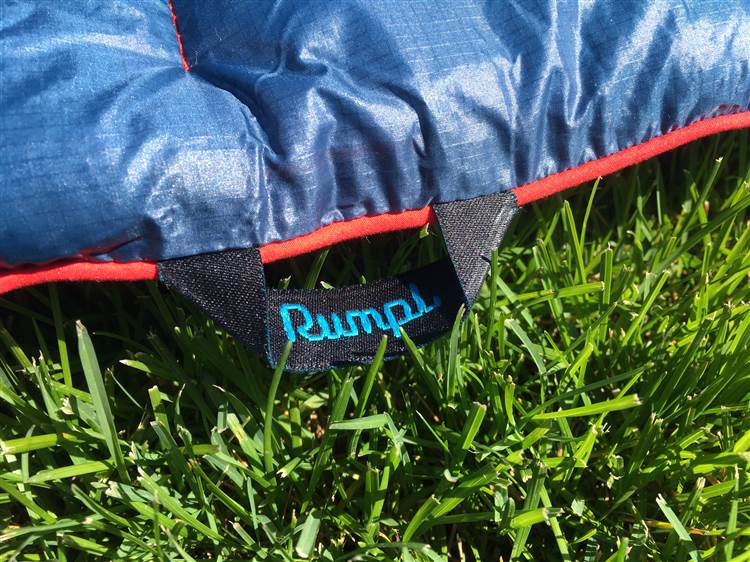 
For backpacking it should be long and
wide enough for what I will use it for and it's not overly heavy although it
does take up a fair amount of room when packed. Speaking of packing, my first
attempt to get it back into the stuff sack did not fair too well; I kept trying
to roll it up like it originally came to me but that didn't work. Finally I
just stuffed it in with no regard for rolling or folding and was able to get it
in. Interestingly enough I was on Rumpl's website earlier today and saw a note
that they recommend stuffing it rather than rolling or folding it.
SUMMARY
The Puffy blanket appears to be
well-made and rugged enough for backpacking and hammocking. I look forward to
getting it on the trail and seeing how well it does.
This concludes my
Initial Report for the Puffy blanket. Thanks to Rumpl for providing this
blanket for testing and to BackpackGearTest.org for allowing me to participate
in this test.
FIELD
REPORT
FIELD LOCATIONS AND CONDITIONS
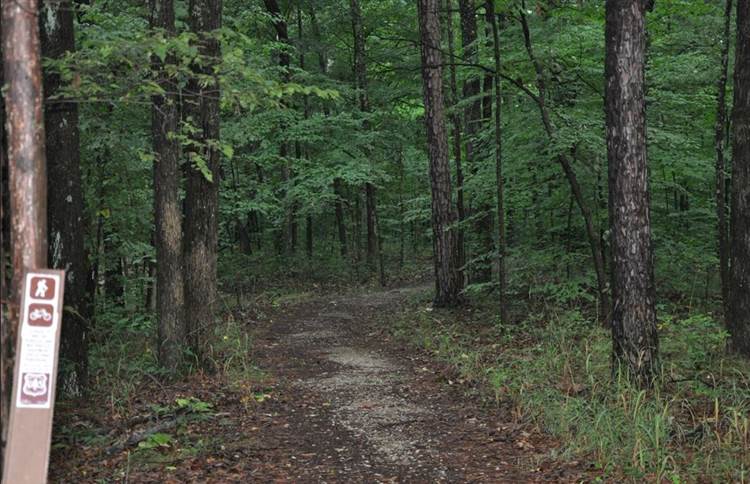 During the past two months I took the Rumpl blanket on
three backpacking trips and a family outing for a total of five nights and 21 mi
(34 km) of backpacking. Temperatures ranged from the mid 60's F (19 C) to the
upper 80's F (31 C) during my trips with a range of weather conditions that
included everything from sunny skies to full-on downpours. Elevations in the
areas I hiked varied from 520 to 805 ft (158 to 245 m) above sea
level. During the past two months I took the Rumpl blanket on
three backpacking trips and a family outing for a total of five nights and 21 mi
(34 km) of backpacking. Temperatures ranged from the mid 60's F (19 C) to the
upper 80's F (31 C) during my trips with a range of weather conditions that
included everything from sunny skies to full-on downpours. Elevations in the
areas I hiked varied from 520 to 805 ft (158 to 245 m) above sea
level.
My first trip of the test period was a two-night backpacking trip
to Southern Indiana (IN). Since it was predicted to be quite warm this weekend
I decided to leave my sleeping pad at home and sleep on top of the blanket, only
wrapping up in it if necessary. Nighttime temperatures ended up being in the
low 70s F (22 C) so I did exactly as planned and doubled up the blanket and laid
on top of it in shorts and a t-shirt. I woke up refreshed but also a little
sore from the hard ground, no fault of the blanket, as it wasn't designed to be
a cushion. Despite the high humidity I didn't notice any condensation or wet
spots on the blanket.
My second trip with the Rumpl was an overnighter
to the Hardin Ridge area of the Hoosier National Forest. This time I slept in
my hammock and met my family the next morning to go boating. Temperatures
during this outing ranged from 89 F (31 C) during the day to 67 F (19 C) at
night. Thankfully this trip got moved from its original date, which ended up
being a deluge with fierce thunderstorms and 4 in (10 cm) of rain falling in 24
hours, to the following weekend, which was perfect for boating. The blanket
worked great as a covering for me in my hammock and it also came in handy
protecting those in the front of the boat from water spray as we encountered
white caps while crossing the lake.
Thankfully I brought my hammock on
the last trip of this test period as what started out as a nice weekend turned
into a cold, wet torrent of rain as major thunderstorms crossed through Indiana
(IN) dropping buckets of water on me. Apart from hiking into and out of the
park I spent the entire weekend huddled under my rain tarp. While hiking back
to my car I passed a five gallon bucket in the parking lot that had more than
5.5 in (14 cm) of water in it.
PERFORMANCE IN THE FIELD
So far, I have really enjoyed
using the Rumpl. Below are some comments related to its performance in the
field:
SIZE AND WEIGHT:
At 54 x 80" (137 x 203 cm) the Rumpl is large
enough for me to use like a sleeping bag, laying on half of it while folding the
other half on top of me. This is how I expect to use it most often once the
weather gets colder. Since it has loops in each corner I am also toying with
the idea of turning it into a quilt for use with my hammock. Its design offers
lots of flexibility which is something I like. Anytime I can use an item for
multiple purposes it makes that item more valuable in my mind. At 53.5 oz (1.5
kg) or approximately 3.3 lb the Rumpl is not lightweight, especially considering
its temperature rating, but it's also not overly heavy. In that regards, I see
it as a good option when two people are sharing a tent while backpacking. In
that case, the blanket could be used as a top cover for both people, thus
eliminating the weight of a second sleeping bag.
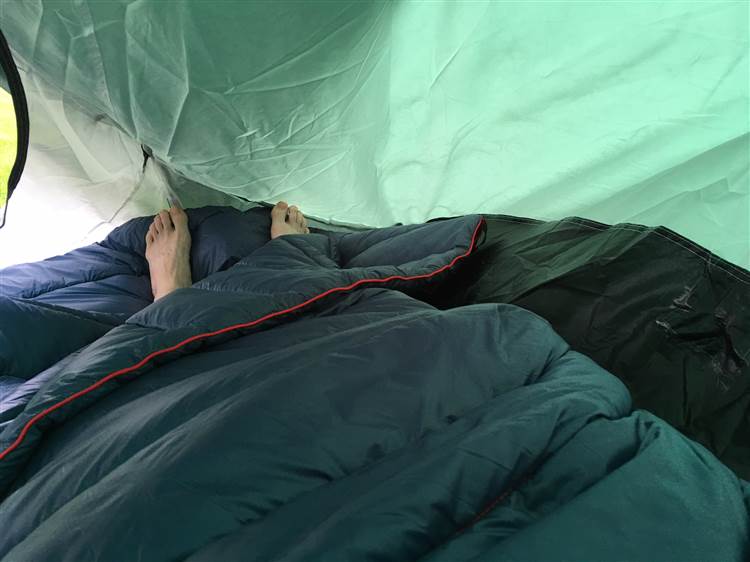 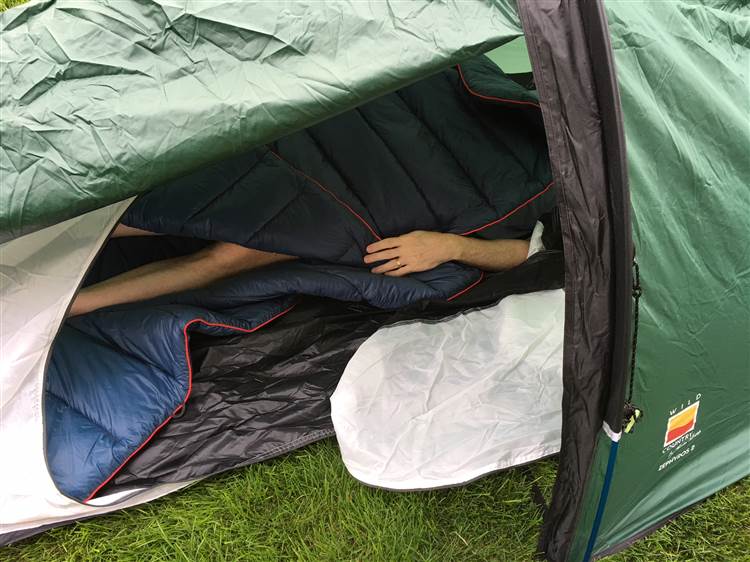
COMFORT:
The Rumpl was soft against
my skin and it didn't appear to absorb much if any moisture. I never felt
clammy while laying on it or covering up with it. It also didn't seem to absorb
odors, although I'm not prone to sweating so I'm probably not a good test case.
I found the Rumpl most comfortable when used over top of my sleeping pad, which
I did one night in my backyard. The sleeping pad provided additional padding
from the ground which was much appreciated.
DURABILITY:
After two
months of testing, the Rumpl shows no signs of wear or damage. The fabric seems
to be quite durable for its weight and I have yet to snag or tear it. In
addition, it seems to be holding its loft nicely. As recommended by the
manufacturer I hang it from a hook when not using it, and try not to overstuff
it when on the trail. My experience with synthetics in general has taught me to
limit the number of times, within reason, that I stuff them in a sack for
extended periods.
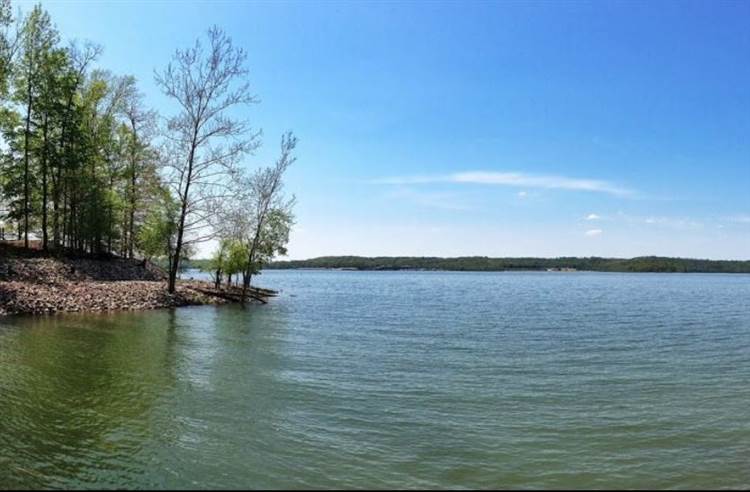 WARMTH: WARMTH:
I can't offer any real world
knowledge at this time regarding the warmth of this blanket as temperatures
during Field Testing never dropped below the mid 60s F (19 C). I will say
subjectively that the Rumpl feels like it can handle temperatures in the 50s F
(12 C) or colder depending how much wind is present. Being as the Rumpl is open
on the sides and ends, cold air infiltration will ultimately limit how warm I
can stay in the blanket. While using the Rumpl during my last three outings I
liked the fact that it was open as I could easily remove part or all of it if I
got hot. I look forward to cooler temperatures and the opportunity to test the
cold weather limit of this blanket.
WEATHER RESISTANCE:
I'm happy to
report that the Rumpl dried very fast after getting wet, which happened numerous
times on my last trip. The culprits were both the wind that drove rain under my
rainfly and into the hammock and also the hammock straps which carrier water
into my hammock. My homemade drip lines simply couldn't keep up with the volume
of water that ran down the hammock straps and eventually my blanket and I got
soaked. Luckily it was quite warm out so it wasn't a big deal, just annoying
more than anything. Even though the blanket was wet it didn't seem to lose much
of its insulating properties.
When the rain finally stopped about an hour
before I left, I let the Rumpl blow in the breeze and it quickly dried out, just
not completely in the limited time I gave it before needing to pack up and meet
the rest of my family.
In addition to using the Rumpl for backpacking, my
family and I have used it numerous times as a blanket around the house, and even
as a ground cloth when watching fireworks over July 4th. Overall, it's seen a
lot of use and has held up very well.
SUMMARY
The Rumpl performed very well
during Field Testing. It is comfortable, durable, warm and weather resistant.
I really like how versatile it is and look forward to further testing during the
next several months.
This concludes my Field Report of the Rumpl
blanket. Thanks to Rumpl for providing this item for testing and to
BackpackGearTest.org for allowing me to participate in this test.
LONG-TERM
REPORT
LONG-TERM TEST LOCATIONS AND
CONDITIONS
During the past two months I took
the Rumpl blanket on two backpacking trips to Southern Indiana (IN), totaling
four nights and 14 mi (22.5 km) of backpacking. Temperatures ranged from the
upper 40's F (9 C) to the mid 70's F (25 C) and skies were mostly sunny with no
precipitation.
Trip #1
Location: Southeastern IN
Elevation: 883
ft (269 m)
Temperature: 61 F to 77 F (16 C to 25 C)
Skies: Partly
sunny
Conditions: Calm to light breeze
Distance hiked: 8 mi (12.8
km)
Trip #2
Location: Southeastern IN
Elevation: 855 ft (260
ft)
Temperature: 49 F to 70 F (9 C to 20 C)
Skies: Clear
Conditions:
Breezy
Distance hiked: 6 mi (9.7 km)
For my two trips during Long Term
Testing I decided to go hammock camping in one of my favorite spots in
Southeastern IN. Not expecting temperatures to drop below 50 F (10 C) I decided
to bring my sleeping pad and the Rumpl blanket for warmth, figuring I could put
on a sweatshirt if I got cold during the night. I slept in shorts, a long
sleeve performance shirt, and socks the first two nights and was nice and warm
until morning. On my second trip (nights three and four), I wore the same
clothes to bed as I had on my first trip but woke up cold around 2:30am so I put
on some thermal underwear that I had brought along as well as a sweatshirt and
beanie. I quickly warmed up and slept comfortably through the rest of the
night.
PERFORMANCE IN THE FIELD
The Rumpl blanket performed well
during Long Term Testing. It kept me warm, provided excellent coverage, and
wasn't drafty even in the breezy conditions experienced during my second trip.
After spending substantial time using this blanket I think Rumpl's 40 F
(4.4 C) temperature rating is spot on. The blanket seems to breathe well also
as I never got that 'clammy feeling' like it was holding in moisture. The
blanket never got damp from dew during Long Term Testing because it was tucked
underneath my rain fly, but even when it did get wet, which happened during
Field Testing, it still retained heat just fine.
The blanket seems well
suited to hammock camping but it also worked really well when I went tent
camping earlier this summer. It is not super lightweight but if two people were
sharing a hammock or tent and were willing to share a Puffy blanket versus
bringing two sleeping bags, the weight savings would be significant. I also
like the fact that it's less constricting than a mummy bag and easier to let an
arm or leg stick out if it gets too hot.
Pros
warm to 45 F (7 C), the
coldest I've tested it so far
good breathability
roomy, not restricting
like mummy bag
durable
weight savings when using for two
people
Cons:
Carrying size is bulky compared to down blanket
SUMMARY
The Rumpl performed very well
during Long Term testing, further cementing its place in my gear closet. As I
said during Field Testing and continue to believe, it is a versatile piece of
gear that is 'comfortable, durable, warm and weather resistant.' I'm excited to
try it in colder temperatures this fall and see how well it does.
This
concludes my Long Term Report and this test series for the Rumpl Puffy blanket.
I would like to thank Rumpl and BackpackGearTest.org for the opportunity to test
this blanket.
This report was created with the BackpackGearTest.org
Report Writer Version 1. Copyright 2017. All rights reserved.
Read more reviews of Rumpl gear
Read more gear reviews by Brian Hartman
|




